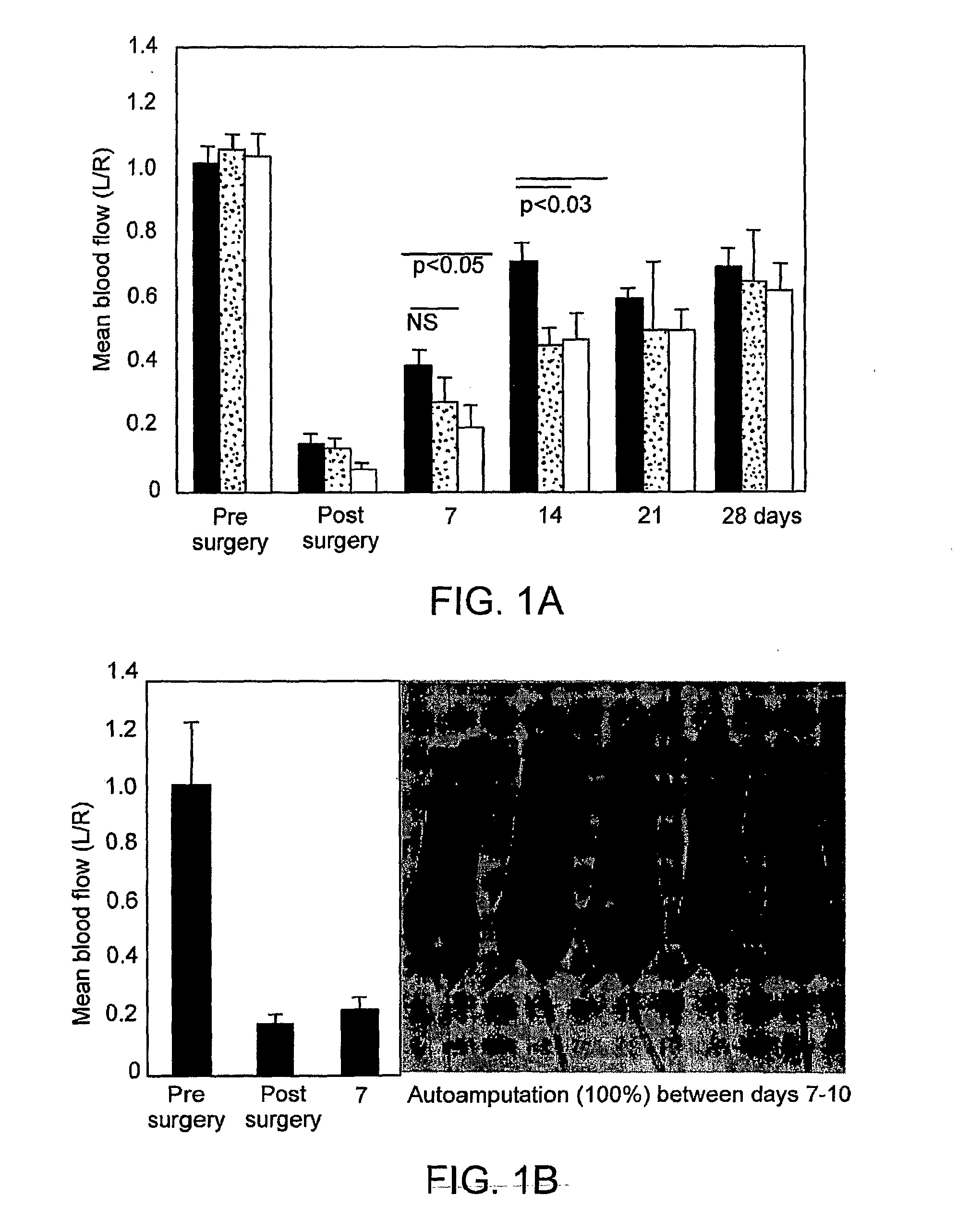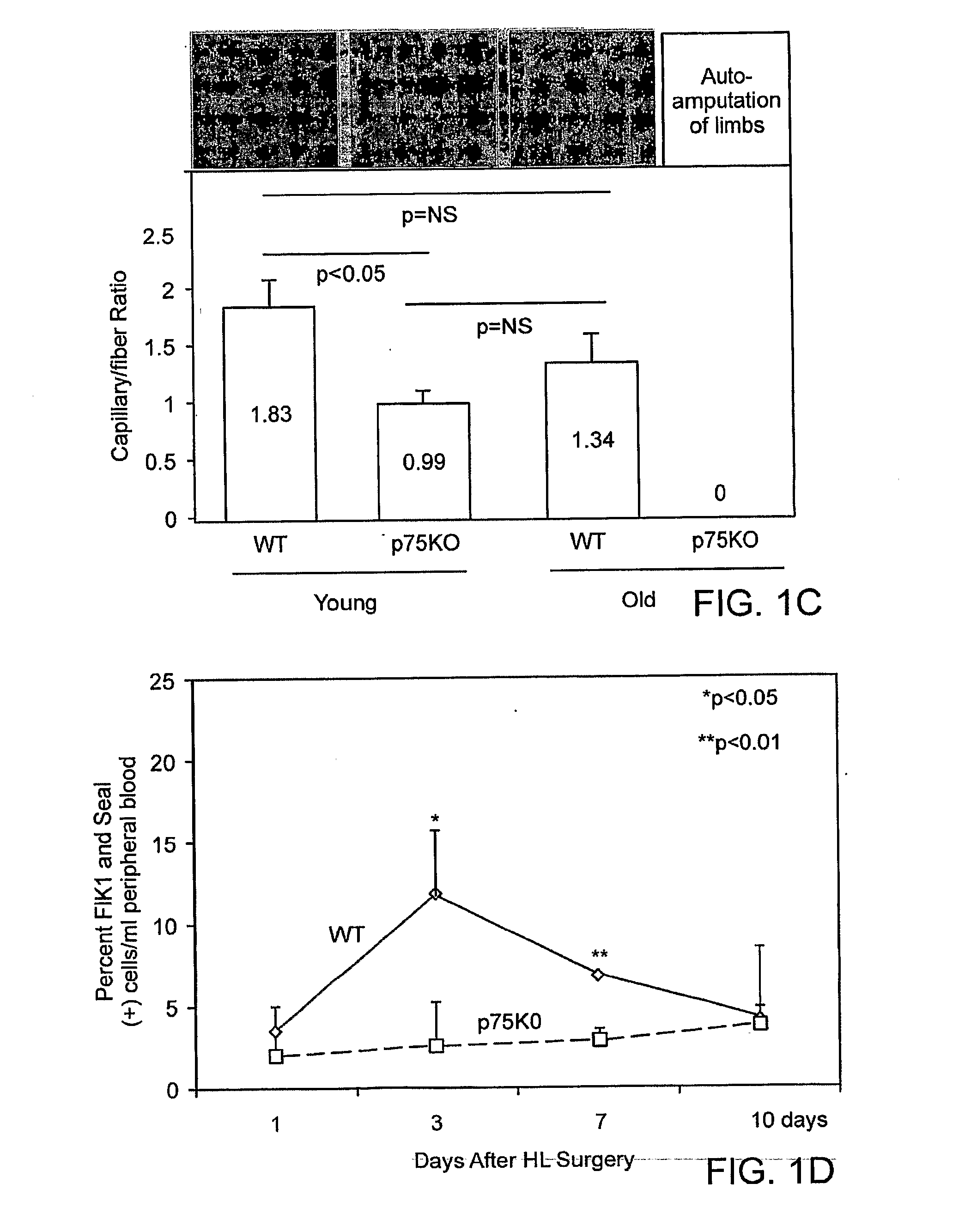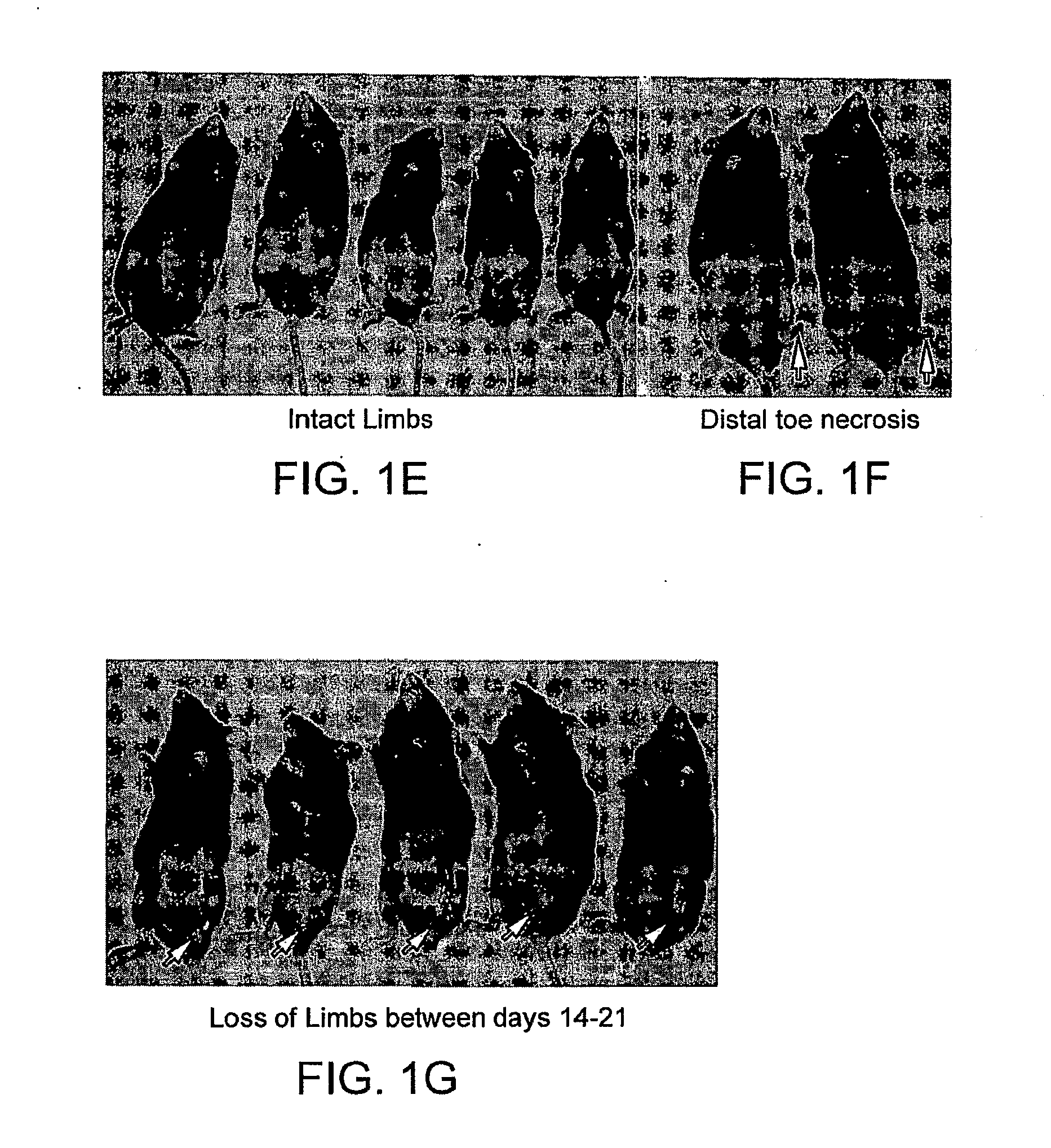USE OF TUMOR NECROSIS FACTOR-alpha RECEPTOR p75 FOR TREATMENT OF ISCHEMIA-INDUCED NEOVASCULARIZATION
a tumor necrosis factor and tumor necrosis technology, applied in the direction of automatic disconnection emergency protective arrangements, peptide/protein ingredients, depsipeptides, etc., can solve the problem of increasing the risk of atherosclerosis of the coronary and peripheral arteries, and achieve the effect of reducing, suppressing, attenuating, diminishing, or stabilizing the development or progression of disease or disorder an organism
- Summary
- Abstract
- Description
- Claims
- Application Information
AI Technical Summary
Benefits of technology
Problems solved by technology
Method used
Image
Examples
example 1
Neovascularization and EPC Mobilization is Mediated by p75 TNFR2 Signaling
[0122]To evaluate the effect of bone marrow transplantation on neovascularization in old mice and to examine the role of functional p75 receptor / TNFR2 in post-ischemic recovery, two bone marrow transplantation murine models were established. The first model was used to evaluate whether the replacement of old p75KO bone marrow with young wild-type marrow would prevent limb autoamputation in old p75KO mice. This model provides for the evaluation of the contribution of wild-type bone marrow-derived cells to the processes of post-ischemic recovery in p75KO tissue. To evaluate the contribution of bone marrow-derived p75KO cells to post-ischemic recovery in otherwise wild-type tissue, a second murine model was established. In this model, old wild type mice were treated with lethal irradiation to destroy their endogenous bone marrow and the old wild-type mice were subsequently transplanted with bone marrow from young...
example 2
Ischemia-Induced Angiogenesis is Impaired in Old TNFR2 KO Mice
[0123]When assessing the relationship between age and TNFR1 and 2 levels in EPCs, a 25-30% statistically non-significant decrease in p55 levels was found in EPCs from elderly mice compared with younger animals. In contrast, there was a more than 55% (P<0.01) decrease in p75 mRNA levels in EPCs from elderly mice compared with younger animals.
[0124]Mean blood flow in young wild-type mice twenty-eight days after hind limb surgery reached 80% of the pre-ischemic flow (FIG. 1A, black bars). In contrast, recovery of blood flow was delayed up to fourteen days in old wild-type (gray bars) and young p75KO (clear bars) mice (40% of pre-ischemic value vs. 80% in young wild-type mice, P<0.03), but was similar to the recovery in young wild-type mice thereafter (FIG. 1A, days 21 and 28). These results suggested that old wild-type and young p75KO mice exhibit a partial and temporal insufficiency of post-ischemic recovery compared with ...
example 3
Ischemia-Induced VEGF Expression is Lower in the Limbs of p75KO Mice
[0129]When VEGF expression in the muscles of operated limbs was assessed by immunofluorescence, it was highly expressed in the muscle tissue of wild-type mice between days 3 and 7 post-surgery (FIG. 2A, upper panel). In contrast, VEGF expression was minimal in the tissues of p75KO mice between days 3 and 7 (FIG. 2A, lower panel), suggesting that ischemia-induced VEGF expression is impaired in p75KO mice.
[0130]Densitometric analysis of total RNA from hind limb muscle revealed that VEGF expression was not detectable in p75KO mice 3 days after hind limb surgery (FIG. 2B, upper panel), whereas VEGF was highly expressed in wild-type tissue (FIG. 2B, upper panel, clear bars), confirming the immunofluorescent staining results (FIG. 2A). By day 10 VEGF was also detectable in p75KO mice (FIG. 2B, upper panel, black bars), but was about half the level of wild-type controls.
[0131]These results differed from those obtained whe...
PUM
| Property | Measurement | Unit |
|---|---|---|
| areas | aaaaa | aaaaa |
| concentration | aaaaa | aaaaa |
| concentration | aaaaa | aaaaa |
Abstract
Description
Claims
Application Information
 Login to View More
Login to View More - R&D
- Intellectual Property
- Life Sciences
- Materials
- Tech Scout
- Unparalleled Data Quality
- Higher Quality Content
- 60% Fewer Hallucinations
Browse by: Latest US Patents, China's latest patents, Technical Efficacy Thesaurus, Application Domain, Technology Topic, Popular Technical Reports.
© 2025 PatSnap. All rights reserved.Legal|Privacy policy|Modern Slavery Act Transparency Statement|Sitemap|About US| Contact US: help@patsnap.com



